Anterior Face Height Values in a Nigerian Population
- *Corresponding Author:
- Dr. Nkiruka Folaranmi
Department of Child Dental Health, University of Nigeria Teaching Hospital, Enugu, Nigeria.
E-mail: nkyfola@yahoo.com
Citation: Folaranmi N, Isiekwe M. Anterior face height values in a Nigerian population. Ann Med Health Sci Res 2013;3:583-7.
Abstract
Background: Withan increasing demand in the number of patients seeking orthodontictreatment at the Orthodontic unit of University of Benin teaching hospital it becomes imperative to provide normative values for anterior face heights. These values will then form a basis for clinical diagnosis, treatment planning and evaluation of facial proportions following orthodontic treatments. Aim: The aim of this study was to measure anterior face height proportions of school children in Benin City. Subjects and Methods: One hundred Lateral cephalometric radiographs of 12‑15 years old school children, in Benin City were taken to establish anterior face height values. Manual tracings of the cephalograms were carried out and the linear measurements were recorded, summarized, and statistically analyzed using the Microsoft Excel Programme 2000.The comparative test was conducted using the Student’s t‑test to demonstrate any statistically significant difference between the values for the males and females, at 95% confidence level P < 0.05, was regarded as significant. Result: Out of the 100 subjects who participated in the study, there were 40 males 40% (40/100) and 60 females 60% (60/100), with a mean age of 12.2 years. Following a combined data analysis for both males and females, the mean biological values obtained for the parameters investigated are; Anterior Lower Face Height (ALFH) 60.9 (5) mm, Anterior Upper Face Height 47.7 (4) mm, Anterior Total Face Height (ATFH) 108.5 (5) mm, ratio of ALFH to ATFH ALFH: ATFH 56 (4)%. Conclusion: This study provides anterior face height measurements, which will be of great significance in evaluating facial proportions andesthetics in orthodontics, orthognathic surgery, and prosthetic dentistry.
Keywords
Anterior face heights, Asia facial esthetics, Facial proportions
Introduction
The assessment of the upper, lower, and total facial height is a routine aspect of clinical examination in orthodontic practice.[1]
Cephalometry has been used by numerous researchers to produce standard mean values for skeletal, dental, and soft-tissue structures. This has become useful in the classification of different populations.[2] Sarah et al.[3] noted that modern society places emphasis on physical attractiveness and facial beauty and that patients sought orthodontic treatment to improve facial esthetics. More specifically recent studies, have shown that orthodontic treatment influences esthetics in a number of ways, which include wellaligned teeth, an attractive smile and a pleasing facial profile.[4]
Due to an increasing awareness on the need for orthodontic treatment as patients seek to improve their facial esthetics, a scientific understanding of anterior face proportion is necessary. More so, in recent times more Nigerian orthodontist, maxillofacial, and plastic surgeons are sponsored for training in dentofacial orthopedics by The Smile Train hence, it is expected that in a few years orthognathic surgery as an adjunct to orthodontic treatment, would become popular as one of the treatment options, in the treatment of malocclusion in Nigerians hence the need for this study. In an earlier study on facial heights in Nigeria, Isiekwe[5] determined anterior and posterior facial height, but did not evaluate the ratio of lower anterior facial height to total anterior facial height. The present study concentrates on anterior facial heights and the ratio. The data generated from this study will enhance scientific understanding of anterior face profile of Nigerians and it will facilitate studies on evaluation of facial attractiveness. One of such studies is that of Zaidel and Cohen,[6] which evaluated facial profile characteristics of attractive people. Proper application of the data from this study in orthodontic patient management will help in achieving a better esthetic appearance especially in orthognathic surgeries. Other applications of the results of this study will include the construction of intra oral prostheses, for anthropological studies and art works. Facial height values vary from one region to the other and from race to race. In a study amongst white and blacks in Brazil, Livia, et al.[7] concluded that white subjects had larger upper anterior face heightwhereas black subjects had proportionally larger lower anterior face height also boys had a greater tendency towards a vertical pattern than girls.
In a review of the literature regarding the social implications of dentofacial anomalies, Shaw[8] considered it reasonable to anticipate that dentofacial anomalies severe enough to mar a child’s facial attractiveness, may represent an important social disadvantage. Hence, seeking better cosmetic appearance provides a significant motive for the initiation of orthodontic therapy in a bid to acquire a better facial appearance.
Utomi,[9] observed an increasing awareness amongst Nigerians, especially, urban dwellers of the importance of dental esthetics relative to total facial appearance and consequently an increase in the need for orthodontic treatment. In an earlier study of cephalo-facio-dental relationship, a high correlation between facial patterns and anterior vertical proportions was reported.[10] It is imperative, therefore, that achieving better facial profile and esthetics is the main aim of both orthognathic surgery and orthodontic treatment. Availability of data with which to scientifically evaluate anterior face height is important as its value determines facial pattern and appearance. For this study, lateral cephalometric radiographs were used. Previous researchers reported that lateral cephalometric analysis has the advantage of simultaneously imaging the soft-tissue profile and facial skeleton.[11-15] The aim of this study was to carry out anterior face measurements to establish biological values for Anterior upper face height (AUFH), Anterior lower face height (ALFH), Anterior lower face height (ALFH) and Anterior total face height (ATFH).
Subjects and Methods
One hundred orthodontically untreated 12-15 years old school children in Benin City, Nigeria were randomly selected by a multistage sampling method to participate in this study. Ethical clearance was obtained from the research and ethical committee of the University of Benin Teaching Hospital. While informed consent was also obtained from the Heads of Schools and parents of the children who participated in the study.
The selected population had a normal angle’s class 1 molar relationship, with no craniofacial malformations or asymmetry and no previous history of orthodontic treatment. Standard lateral cephalometric radiographs were taken with each subject’s head positioned in a cephalostat and oriented to the Frankfurt horizontal plane. The films were developed, fixed and dried and magnification factor was calculated. Each cephalogram was traced and the cephalometric landmarks [Figure 1] were identified, points joined and linear measurements in millimeters were taken for the AUFH, ALFH, ATFH ATFH and the ratio of ALFH to ATFH ALFH: ATFH was calculated.
1. AUFH (N-Anterior Nasal Spine [ANS]) This was measured in millimeters as the distance between points N (Nasion) and the tip of theANS.
2. ALFH (ANS-M) this was the measured distance from the (ANS) to the Menton (M).
3. ATFH (N-M) This was the measured distance in millimeters from the Nasion to the M it also corresponds to the sum of the ALFH and the AUFH.
4. Ratio of ALFH to ATFH (ALFH: ATFH). This was calculated in percentage from the measured values of the two parameters.
Statistical analysis
The measurements generated were subjected to statistical analysis using the Microsoft Excel Programme 2000.[16] Both comparative and descriptive statistics were used for theanalysis. The mean, standard deviation, minimum, maximum, and range were generated. The comparative test was conducted using the Student’s t-test to demonstrate any statistically significant difference between the values for the males and females, at 95% confidence level P < 0.05, was regarded as significant.
Error of the method was calculated using the Dahlberg’s formula after repeat measurements of 25 films.[17]
Results
One hundred subjects which comprised of 40 males 40% (40/100) and 60 females 60% (60/100), were studied. The age ranged from 12 to 15 years with a mean age of 12.2 years. The magnification factor was calculated to be 0.9. The result of the error of the method for each of the variables is displayed in Table 1 while age distribution of participants according to gender is shown in Table 2. The results of the comparative data analysis for boys and girls are shown in Table 3 and no significant difference was noted in the values for boys and girls; ALFH P = 2.09; AUFH P = 1.95; ATFH P = 2.50. while the result for the combined data analysis for boys and girls is shown in Table 4. Following a combined data analysis for both males and females, the mean biological values obtained for the parameters investigated are; ALFH 60.9 (5) mm, AUFH 47.7 (4) mm, ATFH 108.5 (5) mm, ratio of ALFH to ATFH ALFH: ATFH 56.0% (4). The frequency distribution of the AUFH, ALFH, ATFH and ratio of ALFH to ATFH values obtained are shown in Tables 5-8 and displayed in Figures 2-5.
| ALFH | AUFH | ATFH |
|---|---|---|
| 0.4 | 0.2 | 0.5 |
Table 1: Error of the method
| Age (years) | Male | Female | Total |
|---|---|---|---|
| 12 | 16 | 18 | 34 |
| 13 | 9 | 15 | 24 |
| 14 | 11 | 23 | 34 |
| 15 | 4 | 4 | 8 |
| Total | 40 | 60 | 100 |
Table 2: Age distribution of participants according to gender
| Measurement | Male (SD) mm | Female (SD) mm | P |
|---|---|---|---|
| ALFH | 60.8 (4.9) | 60.9 (5.1) | 2.09 |
| AUFH | 47.6 (3.7) | 47.8 (5.5) | 1.95 |
| ATFH | 108.4 (5.8) | 108.6 (5.3) | 2.50 |
Table 3: Comparative analysis of mean anterior face height values of males and females
| Measurement | Mean (SD) | Minimum | Maximum |
|---|---|---|---|
| ALFH (in degrees) | 60.9 (5) | 57.9 | 63.3 |
| AUFH (in degrees) | 47.7 (5) | 44.8 | 49.4 |
| ATFH (in degrees) | 108.5 (5) | 104.3 | 111.8 |
| ALTH: ATFH (%) | 56.0 (4) | 53.5 | 57.4 |
Table 4: Combined data analysis for males and females
| AUFH (mm) | Frequency | Percentage frequency | Cumulative percentage |
|---|---|---|---|
| 32-35 | 2 | 2 | 2 |
| 36-39 | 4 | 4 | 6 |
| 40-43 | 7 | 7 | 13 |
| 44-47 | 36 | 36 | 49 |
| 48-51 | 38 | 38 | 87 |
| 52-55 | 7 | 7 | 94 |
| 56-59 | 4 | 4 | 98 |
| 60-63 | 0 | 0 | 98 |
| 64-67 | 2 | 2 | 100 |
| Total | 100 | 100 |
Table 5: The frequency distribution of anterior upper face height for children aged 12-15 years
| ALFH (mm) | Frequency | Percentage frequency | Cumulative percentage |
|---|---|---|---|
| 42-45 | 2 | 2 | 2 |
| 46-49 | 2 | 2 | 4 |
| 50-53 | 0 | 0 | 4 |
| 54-57 | 13 | 13 | 17 |
| 58-61 | 34 | 34 | 51 |
| 62-65 | 36 | 36 | 87 |
| 66-69 | 10 | 10 | 97 |
| 70-73 | 1 | 1 | 98 |
| 74-77 | 2 | 2 | 100 |
| Total | 100 | 100 |
Table 6: The frequency distribution of anterior lower face height, values for school children aged 12-15 years
| ATFH | Frequency | Percentage frequency | Cumulative percentage |
|---|---|---|---|
| 92-95 | 2 | 2 | 1 |
| 96-99 | 5 | 5 | 6 |
| 100-103 | 8 | 8 | 14 |
| 104-107 | 31 | 31 | 45 |
| 108-111 | 25 | 25 | 70 |
| 112-115 | 22 | 22 | 92 |
| 116-119 | 7 | 7 | 99 |
| 120-113 | 0 | 0 | 99 |
| 124-127 | 1 | 1 | 100 |
| Total | 100 | 100 |
Table 7: The frequency distribution of anterior total face height, values for school children aged 12-15 years
| ALFH: ATFH | Frequency | Percentage frequency | Cumulative percentage |
|---|---|---|---|
| 40.0-42.9 | 2 | 2 | 2 |
| 43.0-45.9 | 0 | 0 | 2 |
| 46.0-48.9 | 0 | 0 | 2 |
| 49.0-51.9 | 9 | 9 | 11 |
| 52.0-54.9 | 28 | 28 | 39 |
| 55.0-57.9 | 40 | 40 | 79 |
| 58.0-60.9 | 15 | 15 | 94 |
| 61.0-63.9 | 2 | 2 | 96 |
| 64.0-66.9 | 3 | 3 | 99 |
| 67.0-69.9 | 1 | 1 | 100 |
| Total | 100 | 100 |
Table 8: The frequency distribution of the ratio of anterior lower face height to anterior total face height school children aged 12-15 years
Discussion
The quartile values obtained for the AUFH were 44.8 mm and 49.4 mm respectively (25 and 75 percentiles). This implies that for the population studied, the range for the AUFH lies between 44.8 mm and 49.4 mm. Any value below 44.8 mm was taken to be abnormally low and any value above 49.4 mm was taken to be abnormally high and these two extremes will define facial proportion and therefore aesthetics. The mean value for the AUTH was found to be 47.7 (4.8) mm. The ALFH values ranged from 57.9 mm to 63.3 mm, with a mean value of 60.9 (5.0) mm. The ATFH values ranged from 104.3 mm to 111.8 mm with a mean value of 108.5 (5) mm. While the ratio of ALFH to ATFH (ALFH: ATFH) values ranged from 53.5% to 57.4% with a mean value of 56.0% (0.8). In an earlier study among the Hausa-Fulani children in Northern Nigeria, Upper Face Height was found to constitute 44.1% of the Total Face Height while Lower Face Height was 55.9%.[18] This results shows that although, regional variations exists in the anterior upper and lower face heights the ratio of the lower face to total face height of this study, do not vary significantly from that of Utomi’s study.
In the clinical evaluation of a patient, a comparison of the patient’s measurement to the norms will indicate pre- or post-normalty and therefore, considerations for clinical approaches that will tend to change patient’s profile towards the normal for the race. A short upper anterior face height often presents as a skeletal problem with an anterior open bite. Hence, a surgical rather than purely an orthodontic treatment would be indicated. The knowledge of anterior facial proportions is important as this defines facial aesthetics. Gautam et al.[19] in their study showed that profile images with Eastman’s normal values of Lower to total face height ratio of 55% were rated as most attractive by lay persons. They also concluded that images with increased lower face proportion were rated less attractive and more likely need orthodontic treatment than those with a shorter lower face proportion. It is worthy of note that Rakosi et al.,[20] reported an anterior lower to ATFH ratio of 55% in Caucasians, this ratio is comparable to that obtained in the present study 56.0% (56/100), while Gosia et al.[21] established a ratio of 58.0 (2.7) with a range of 50-67.
Conclusion
This results of this study shows that the ALFH of secondary school children in Benin city is longer than the AUFH, with a total anterior face height of 108.5 (5.5).
No significant difference was noted in the facial values for males and females in this study. However, the values of the upper and lower face heights from this study differ from those of Hausa-Fulani school children.
Future more representative national study is recommended.
References
- Baral P, Lobo SW, Menezes RG, Kanchan T, Krishan K, Bhattacharya S, et al. An anthropometric study of facial height among four endogamous communities in the Sunsari district of Nepal. Singapore Med J 2010;51:212-5.
- Joy O, Ahmed E, Gabriel O, Ezon-ebidor E. Anthropometric study of the facial and nasal length of adult igbo ethnic group in Nigeria. Internet Journal of Biological Anthropology 2009 volume 2 No 2. Available from: http://archive.ispub.com/ journal/the-internet-journal-of-biological-anthropology/ volume-2-number-2/.
- Abu Arqoub SH, Al-Khateeb SN. Perception of facial profile attractiveness of different antero-posterior and vertical proportions. Eur J Orthod 2011;33:103-11.
- Orsini MG, Huang GJ, Kiyak HA, Ramsay DS, Bollen AM, Anderson NK, et al. Methods to evaluate profile preferences for the anteroposterior position of the mandible. Am J Orthod Dentofacial Orthop 2006;130:283-91.
- Isiekwe M. The measurement of anterior and posterior facial heights in a Nigerian population. Afr Dent J 1994;8:1-6.
- Zaidel DW, Cohen JA. The face, beauty, and symmetry: Perceiving asymmetry in beautiful faces. Int J Neurosci 2005;115:1165-73.
- de Freitas LM, Pinzan A, Janson G, Freitas KM, de Freitas MR, Henriques JF. Facial height comparison in young white and black Brazilian subjects with normal occlusion. Am J Orthod Dentofacial Orthop 2007;131:706.e1-6.
- Shaw WC. The influence of children’s dentofacial appearance on their social attractiveness as judged by peers and lay adults. Am J Orthod 1981;79:399-415.
- Utomi I. Cephalometric analysis of 11-13 year old Hausa – Fulani school children. West African College of Surgeon Thesis. 1998.
- Sassouni V. A roentgenographic cephalometric analysis of cephalo-facio-dental relationships. Am J Ortho 1955;41:735-64.
- Begg RJ, Harkness M. A lateral cephalometric analysis of the adult nose. J Oral Maxillofac Surg 1995;53:1268-74.
- Showfety KJ, Vig PS, Matteson S. A simple method for taking natural-head-position cephalograms. Am J Orthod 1983;83:495-500.
- Huggare J. The “fluid-level method” for recording natural head posture. Proc Finn Dent Soc 1985;81:199-203.
- Robison JM, Rinchuse DJ, Zullo TG. Relationship of skeletal pattern and nasal form. Am J Orthod 1986 Jun; 89:476-9.
- O’Ryan F, Schendel S. Nasal anatomy and maxillary surgery.I. Esthetic and anatomic principles. Int J Adult Orthodon Orthognath Surg 1989;4:27-37.
- Microsoft Office 2000.
- Dahlberg G. Errors of Estimation Statistical Methods for Medical and Biological Students. London: George Allen and Unwin; 1940. p. 126.
- Utomi IL. Vertical facial height and proportions of face in Hausa-Fulani children in Northern Nigeria. Niger Postgrad Med J 2004;11:32-6.
- Gautam G, Shashikalakumari V, Garima G. Facial attractiveness influenced by lower face vertical proportions and mandibular prominence. Orthod waves in press, corrected proof, Available online 11 December 2012.
- Rakosi T. Proportional analysis. An Atlas and manual of cephalometric radiography. London: Wolfe; 1978; p. 81.
- Jamroz GM, Kuijpers-Jagtman AM, van’t Hof MA, Katsaros C.Dental maturation in short and long facial types. Is there a difference? Angle Orthod 2006;76:768-72.

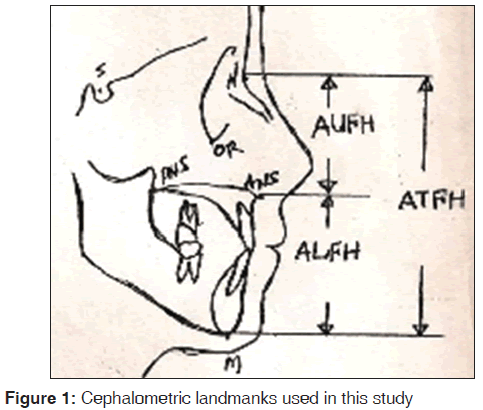
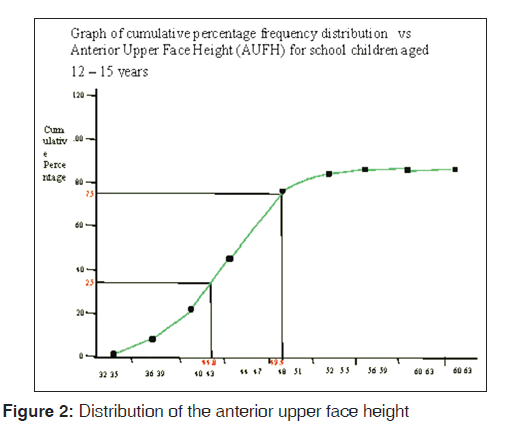
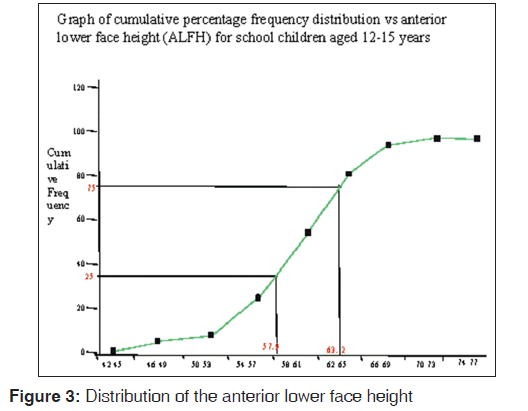
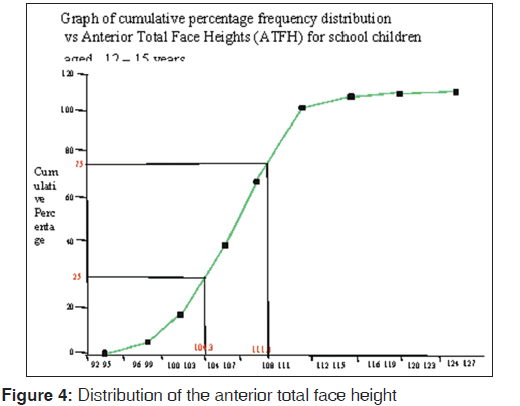
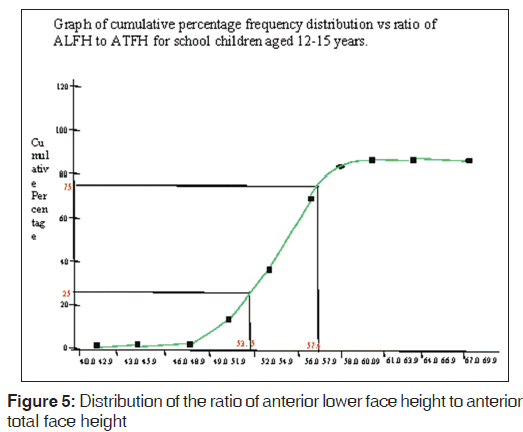


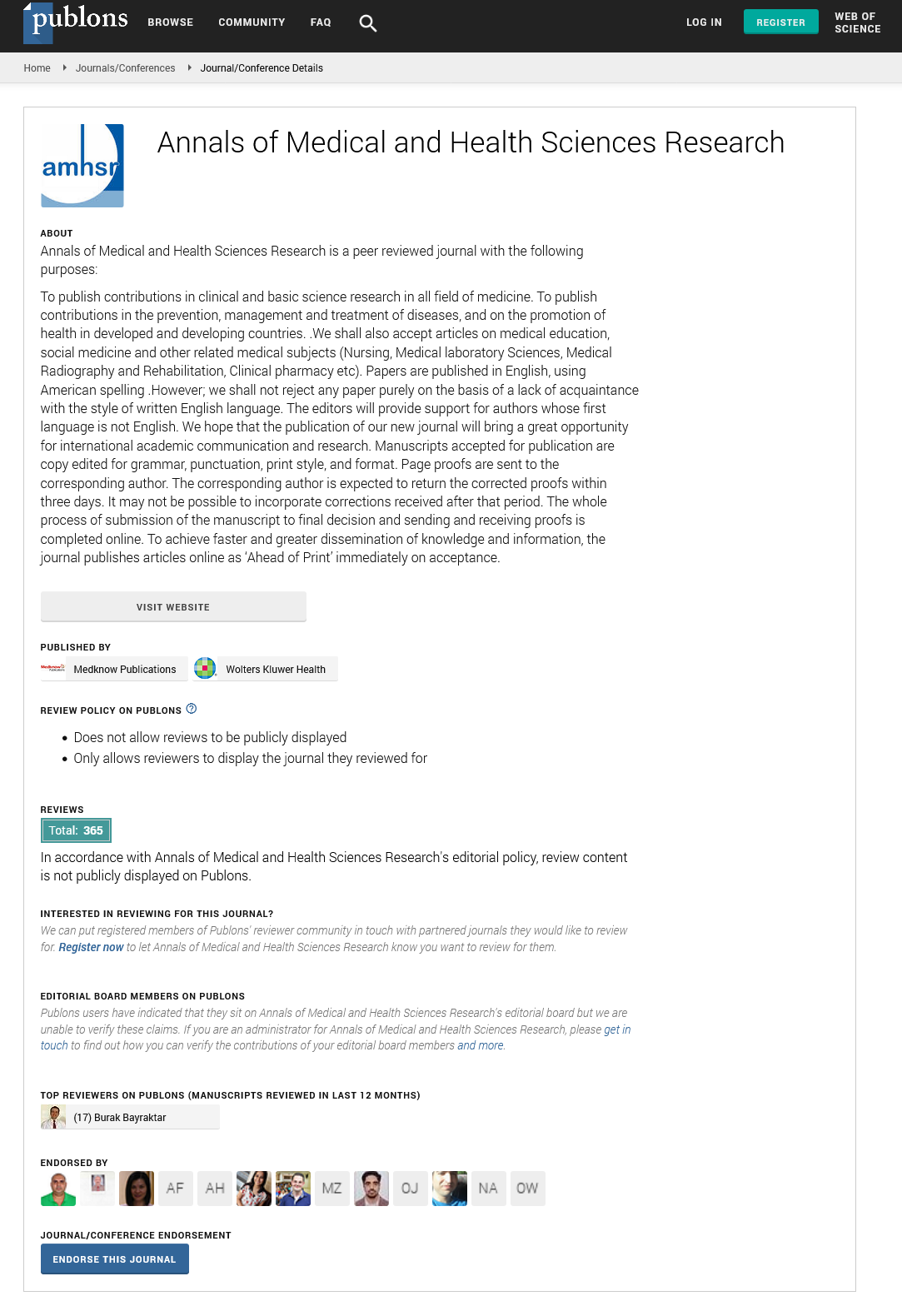
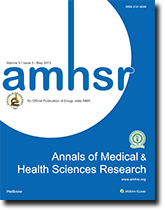 The Annals of Medical and Health Sciences Research is a monthly multidisciplinary medical journal.
The Annals of Medical and Health Sciences Research is a monthly multidisciplinary medical journal.